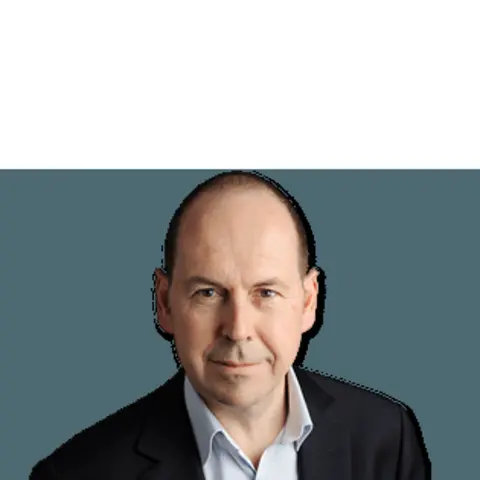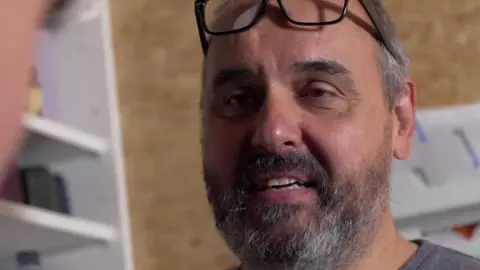Want full fibre? Head to the Hebrides

Grimsay in the Outer Hebrides, a three mile-long rocky outcrop linked to Benbecula by a causeway, has just a hundred households - and the best fibre broadband connections in the UK.
Grimsay and Great Bernera, a hundred miles to the north, have both been given full fibre broadband, meaning every home in these tiny remote communities can now get fibre piped right to the door.
This makes them unusual - just 7% of UK homes have access to full fibre, which means we lag far behind many of our European neighbours.

In his campaign for the Tory leadership the new Prime Minister Boris Johnson made great play of a pledge to bring fibre into every home by 2025.
But the operation to wire up Grimsay and Great Bernera shows how expensive that could be. It is part of the Digital Scotland project which has seen £442m spent - the lion's share coming from the Scottish government - to make sure rural areas do not miss out on the fibre broadband revolution.
People like Robin and Michelle Spratt, who run a candle-making business from their Grimsay home and take in bed and breakfast guests, say the fibre is already proving transformative.
'Embarrassing'
Expensive satellite broadband used to be the only option here and when guests asked for the wifi password they had to say no because they would quickly burn up the monthly data allowance.

"It was embarrassing," says Robin. "But since the fibre came all that's changed."
John MacDonald, who runs his haulage business from Grimsay, points to another reason why fast fibre is now becoming a vital resource for any company that wants to stay competitive.
He takes part in online auctions to buy new equipment and explains that using slow satellite broadband he would often be several bids behind the action: "Now I can keep up with the bids."
Up the road at the Uist Wool Mill, Hazel Smith points to the rusty satellite dish on the roof and looks forward to its replacement by a fibre connection later this month.
This community enterprise has found that its vital marketing efforts have been hampered by the lack of reliable connectivity.
But Hazel says the wider community will benefit, with people less likely to leave the island communities: "Being able to work online and at a distance is hugely important - it means you can live where you want to live, but still do a city style job."
Fibre campaigners have long argued that this kind of connectivity is more vital in remote rural areas than the cities, and have called for them to be first rather than last in the queue for the latest technology.
But this comes at a cost - BT reckons the price of connecting the most rural 10% of the population comes in at £4,000 per household as compared to £400 for people in cities.
 Openreach
OpenreachRight now, BT Openreach is on target to deliver full fibre to around 15 million homes by 2025.
But that is around 50% of UK households, while Boris Johnson says everyone should have top quality broadband by then.
When I spoke to Kevin Murphy, who as head of Openreach's fibre rollout is the key man in making the Prime Minister's vision come true, he was diplomatic about the challenge: "The Prime Minister is highly ambitious as are we and we applaud that ambition," he said.
But he went on to point out that hitting the target would mean building fibre connections at a pace faster than any country had achieved.
Fibre case is clear
BT and the other telecoms firms are demanding more tax breaks and a lighter regulatory burden if they are to have any chance of delivering on Mr Johnson's hugely ambitious plans.
For communities in the Outer Hebrides, however, the case for fibre is clear. Even getting to Glasgow can take eight hours from here and for years the threat of depopulation has been growing.
So being able to connect instantly to friends, family and clients around the world makes living in this beautiful spot more attractive to those who might be tempted to leave.
